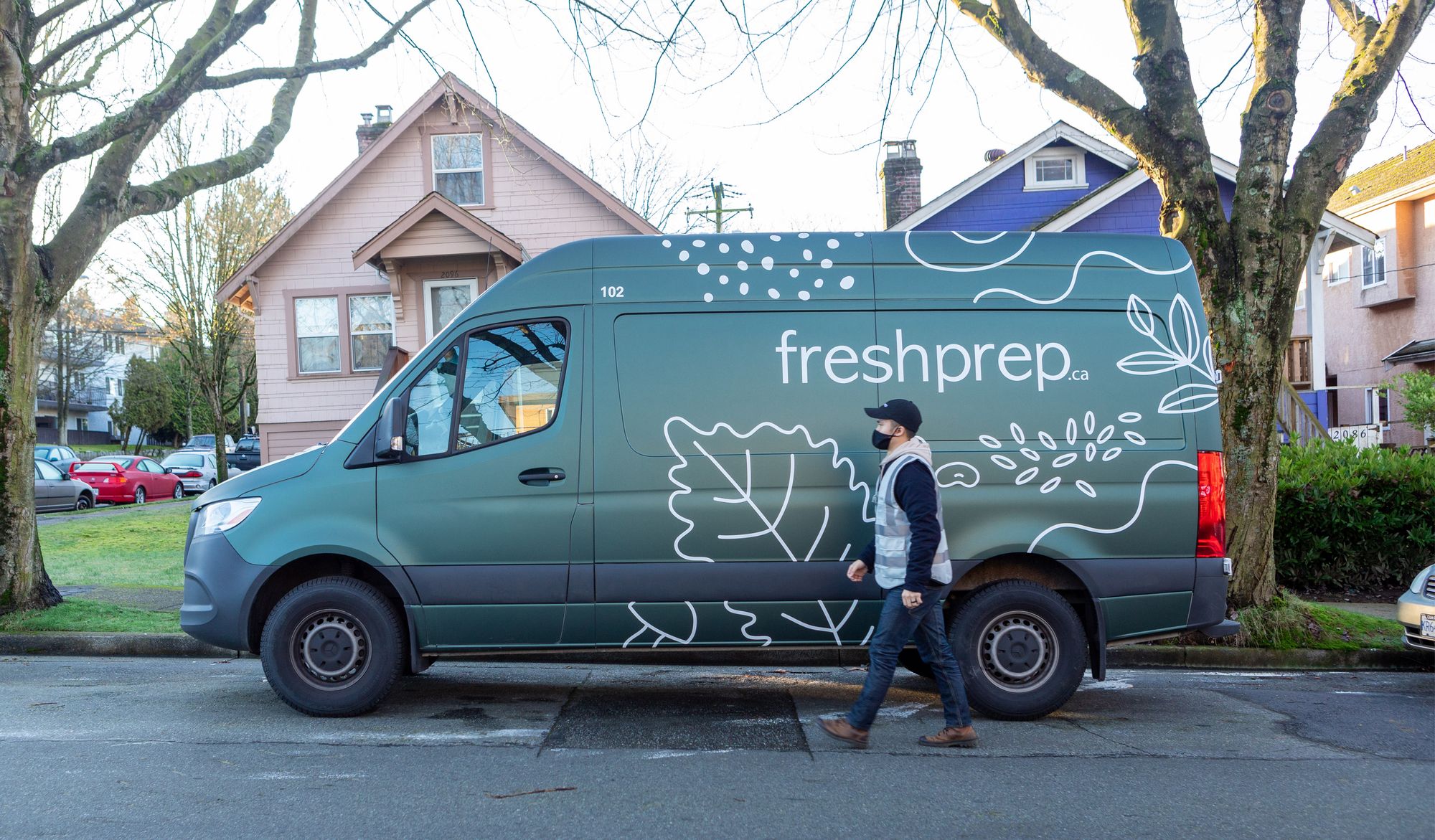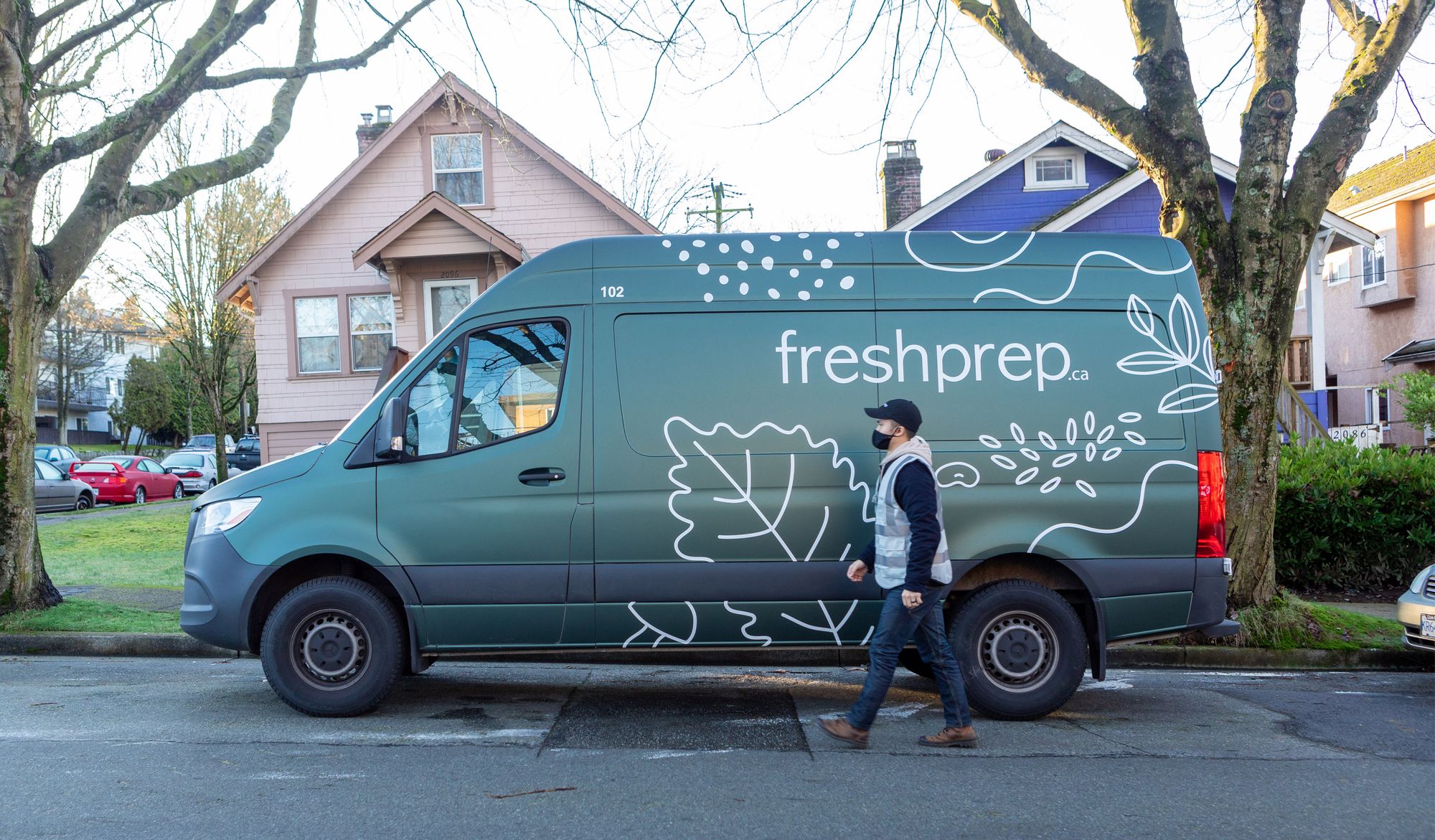Delivery companies, transporting goods and products across vast distances, are critical in the global economy. However, in the face of ongoing climate change, the environmental impact of these operations cannot be ignored.
In recent years, there has been growing concern over the carbon footprint of delivery companies and their contribution to climate change and its effects. As a result, many companies are turning to sustainable practices to reduce their environmental impact while improving their bottom line.
As you look to optimize your company’s logistics practices, what steps can you take to do so sustainably? Learn how sustainability is crucial for all businesses and how you can adopt green initiatives without breaking your budget.

What is Green Logistics and Why Does it Matter to Delivery Companies?
At its core, “green logistics” seeks to optimize the entire supply chain process from beginning to end. For companies operating scheduled or same-day delivery models, it can include various actions. Generally this refers to integrating sustainable and environmentally responsible practices into daily operations.
Some businesses may focus on optimizing routes or reducing packaging waste. Others may use eco-friendly vehicles and fuels or implement closed-loop supply chains.
By adopting green logistics practices, delivery companies can achieve multiple benefits, including:
- Reduced overall environmental impact
- Increased cost savings
- Ensure regulatory compliance
- Improved brand reputation and competitive advantage
Advantages of Implementing Green Logistics in Delivery Operations
As we mentioned above, implementing green logistics for your company has several benefits. Let’s break down each to see how they can impact your delivery business.
Reduced Environmental Impact
Sustainable business practices directly contribute to a cleaner, healthier environment by reducing greenhouse gas emissions, decreasing air and noise pollution, and minimizing waste generation. This helps protect ecosystems and directly combat the effects of climate change.
Cost Savings
Implementing eco-friendly measures can lead to significant cost reductions, such as fuel, energy, and material savings. Efficient route planning and vehicle maintenance can further decrease operating costs.
Regulatory Compliance
Governments worldwide are continuing to recognize the need for tightened environmental regulations. Companies that proactively adopt green logistics practices will be better positioned to comply with these evolving standards instead of experiencing an urgent resource crunch to comply when legislation changes. Investments can be spread out over time instead of being forced to make large, expensive changes all at once. Early compliance can potentially reduce the risk of penalties or fines in the future.
Improved Brand Reputation and Competitive Advantage
In today's environmentally conscious world, consumers are increasingly aware of the sustainability efforts of the companies they patronize. They are more likely to support businesses that align with their values. By adopting green logistics practices, delivery companies can enhance their brand image and attract customers who value environmentally responsible businesses.
The decision to be more environmentally sustainable doesn’t end with brand recognition. Getting ahead of the curve positions companies to gain an edge over competitors who have not yet embraced sustainability. Offering eco-friendly services allows you to cater to the growing market of environmentally conscious customers and businesses, driving growth and ensuring long-term success.

Challenges of Green Logistics
While the advantages of green logistics are clear, several challenges may be unavoidable for some delivery companies. You may face these hurdles when adopting eco-friendly practices for your operation. Fortunately, understanding these obstacles can help companies like yours develop strategies to overcome them and successfully transition to more sustainable operations.
Some key challenges associated with green logistics include the following:
High Initial Investment
Transitioning to eco-friendly business practices often requires significant upfront investment in new technologies, infrastructure, and equipment. Switching to electric or hybrid vehicles is a common example, as purchasing new vehicles and installing charging infrastructure is expensive. These initial expenses may pose a significant financial hurdle for small or medium-sized delivery companies.
Limited Availability of Eco-Friendly Technologies and Infrastructure
Access to eco-friendly technologies and infrastructure, such as electric vehicles, charging stations, or renewable energy sources, may be limited depending on the region or country. This can create challenges for delivery companies trying to transition away from fossil fuels or less sustainable practices, as they may face difficulties sourcing the necessary equipment or infrastructure.
Regulatory and Policy Barriers
In some cases, existing regulations and policies may not support the easy adoption of green logistics practices or create barriers to implementation. Some countries lack incentives for investing in eco-friendly technologies or have outdated regulations that hinder using alternative fuels or vehicles. Regulations or tax credits can vary between states, making adopting your ideal sustainability efforts difficult.
Complex Supply Chain Coordination
Transitioning to eco-friendly logistics often involves coordinating with multiple stakeholders across the supply chain, such as suppliers, manufacturers, and customers. This can be challenging, as each stakeholder may have their levels of commitment to sustainability or differing abilities to adopt eco-friendly practices. This makes aligning the interests of all parties crucial for ensuring smooth collaboration and successful implementation of any sustainability projects.
Performance Measurement and Reporting
Measuring the success of green logistics initiatives can be complex. Often, it requires the development of specific performance indicators, data collection methods, and reporting systems. Companies can face challenges in accurately assessing the impact of their sustainability efforts, which can make determining the most effective strategies for continuous improvement a roadblock for your organization.
Balancing Sustainability and Profitability
While green logistics can lead to long-term cost savings and increased profitability, companies may struggle to balance their sustainability goals with short-term financial pressures. This can be particularly challenging for companies facing intense competition or businesses focused on immediate returns from eco-friendly initiatives.
Despite these challenges, the long-term benefits of adopting green logistics far outweigh the initial obstacles. Developing effective strategies to overcome them and successfully transition to more sustainable and eco-friendly operations is about more than just profit. These actions help guarantee a healthier environment for all of us but can also ensure the company's long-term growth, profitability, and competitiveness in the market.

Best Practices for Sustainable Delivery Operations
With so much opportunity and no shortage of potential hurdles, it can be tough to get started with your own green logistics efforts. By following our collection of best practices, you can overcome challenges and maximize the benefits.
Optimize Delivery Routes and Scheduling
Leveraging advanced route optimization software and algorithms can help companies design more efficient delivery routes that minimize travel distance and time. This reduces fuel consumption, decreases emissions, and improves overall efficiency. Furthermore, consolidating shipments and optimizing delivery schedules can reduce the number of vehicles needed, further reducing environmental impact.
Employee Training and Engagement
Educating employees on the importance of sustainability and green logistics practices is vital for successfully implementing eco-friendly initiatives. Training programs, workshops, and ongoing communication can help employees understand their role in achieving sustainability goals and encourage them to adopt environmentally friendly behaviors in their daily work.
Implement Reverse Logistics Strategies
Reverse logistics refers to the process of managing the return and disposal of products and packaging materials. By implementing efficient reverse logistics strategies, delivery companies can reduce waste, promote recycling, and minimize the environmental impact of their operations. This may involve partnering with recycling facilities, offering customers convenient return options, or repurposing returned products.
Adopt Eco-Friendly Packaging Solutions
Switching to sustainable packaging materials, such as biodegradable, recyclable, or reusable options, can significantly reduce waste and the environmental impact of delivery operations. Optimizing package sizes and using packaging that minimizes empty space can decrease material usage and transportation costs.
Partner with Companies that Support Your Sustainability Goals
Forming alliances with eco-conscious companies can also strengthen your green logistics efforts. That may involve finding suppliers that offer recycled packaging, or alternative fuel fleet services that can help you create a more sustainable end-to-end process.
Some of our customers Onfleet Offset, which offsets carbon emissions through reforestation, to enhance their environmental impact with minimal effort. Aligning with your commitment to a greener future with fellow business partners can make a sizable difference.
Invest in Fuel-Efficient and Alternative Fuel Vehicles
One of the most significant steps a delivery company can take is to invest in fuel-efficient vehicles, such as hybrids or electric vehicles (EVs). These vehicles reduce greenhouse gas emissions and result in lower fuel costs over time. Additionally, exploring alternative fuels like biodiesel, compressed natural gas (CNG), or hydrogen can further decrease the environmental impact of delivery operations.
Set Clear Sustainability Goals and Measure Progress
Establishing clear sustainability objectives and regularly tracking progress is essential for successfully implementing green logistics practices. By developing key performance indicators (KPIs) and measuring the success of eco-friendly initiatives, companies can identify areas for improvement and adjust their strategies accordingly.
By adopting these best practices, delivery companies can overcome the challenges associated with green logistics and create more sustainable delivery operations. Implementing eco-friendly practices benefits the environment and contributes to long-term cost savings, improved brand reputation, and increased competitiveness in the market.

Case Study: Fresh Prep
Since 2021, Onfleet Offset has helped customers offset carbon emissions from deliveries by supporting carbon-removal forestry projects. Customers can easily opt-in to the program with a few clicks on our platform, and we help to reduce their carbon footprint.
One customer, Fresh Prep, has been an Onfleet Offset partner since the beginning. They believe consumers should enjoy all the benefits of a meal kit service - quick, easy, high-quality fresh food - while minimizing their environmental footprint.
As a result of Onfleet Offset, Fresh Prep achieves net-zero emissions for its deliveries, offsetting over 623 metric tons of carbon in 2022 alone.

Using Onfleet to Implement Green Logistics Practices
With a proper understanding of the benefits, challenges, and best practices for green logistics efforts, you can overcome the challenges associated with green logistics and create more sustainable delivery operations.
But to evolve how you manage your delivery operation, you need Onfleet: a powerful, user-friendly platform designed to help delivery companies streamline their operations and optimize their logistics processes.
Our delivery management software provides features that support sustainable logistics, such as route optimization, real-time tracking and communication, and comprehensive analytics to help refine each delivery. Onfleet Offset is an easy-to-enable feature available to all customers seeking to offset carbon emissions for every delivery automatically. It can help kickstart your sustainability efforts by directly your offset costs towards supporting renewable energy projects.
Curious to see how you can truly optimize the delivery experience? Check out how Onfleet can help improve your sustainability practices and simplify deliveries simultaneously.

